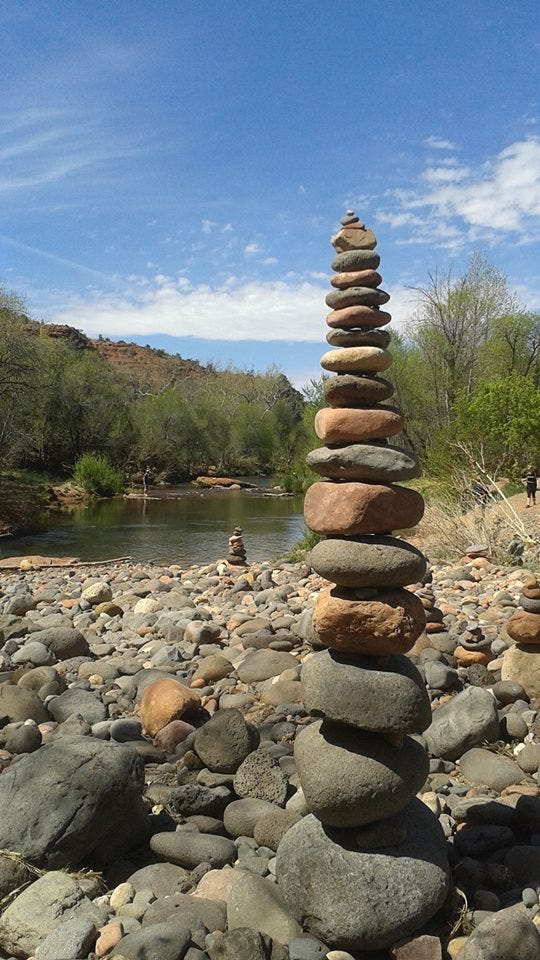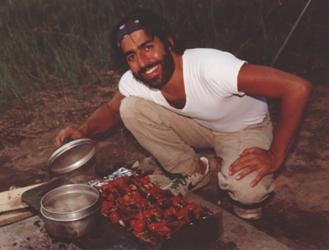In 2001 I was studying to become a naturopath and living well was my focus. In September of 2003 my best friend, Wayne, was diagnosed with a glioblastoma brain tumor. He survived that diagnosis for thirteen months. During that time, I served as his healthcare coordinator and medical advocate. Colleagues and friends from the integrative medicine community came together to form a diverse and skilled support team for Wayne, focused on living well (as is possible) during his invasive treatment protocols.
He welcomed us into his home and heart. “We can do hard things,” he would say while preparing for surgery, radiation, or chemotherapy. Treating brain cancer was not just “hard,” it was brutal. His sense of humor never left him, and his courage, was an inspiration. He chose to use only his landline telephone for communication, despite our begging him to use a mobile phone. When pressed, he would laugh and say, “Don’t you know that cell phones give you brain tumors?” We offered what we could to palliate discomfort and improve his quality of life.
One day in September of 2004 after a year of impossibly difficult medical interventions, Wayne had a series of seizures that sent him to the hospital. Scans showed that the tumor had become untreatable. I watched his facial expressions as he navigated all six stages of grief within minutes. He indicated that he wanted to say something important. His speech was extremely limited due the tumor’s location, but he said very plainly, with sorrow in his eyes, “There comes a time. . .”. We knew those four words meant that he was prepared to say his final farewell. The devastation of that moment plays out in my head sometimes in autumn.
Hospice services were arranged. Dying with dignity would become the immediate focus. Friends brought all manner of help to his home and bedside. We were there to share love and listening; witnesses to his journey toward a final exit from a life he dearly loved. We were also his providers and caregivers, holding space for all the stages of grief alongside our friend, cheering on the small victories, weeping with him as his body began to faulter. During that time, we had a crash course on what hospice service entails.
Those days held moments of profound connection and gratitude, laughter, grace, and beauty. Some days were impossibly difficult, anxiety-laden, bittersweet, and traumatic. The crash course was not just hard, it was brutal. There was so much we didn’t know about the physical and emotional aspects of dying from an end-stage illness. I was no stranger to death and grief, but hospice care was something entirely new. The goal of having our friend’s final days be as pain-free as possible was supported with expert assistance from his hospice team. Teaching us along the way, they showed us how to handle both practical and ontological caregiving circumstances. They helped with his and our grief, their compassion palpable.
Wayne was in hospice for three and half weeks. Those complicated twins, grief and love, were our constant companions, intertwined, abiding with all of us until the end and beyond his death. He transitioned the morning of October 4, 2004 just a couple of weeks short of his 43rd birthday. From that day to the present, I think of October 4th as “Wayne’s Day” a day to remember and honor him.
After his death, I gave up my naturopathic studies, became a certified hospice volunteer, and founded Further Shore. In its most active years the organization provided direct service to countless individuals and families with end-of-life education, trainings, advocacy, and various forms of transition support. Grief before, during, and after loss was and continues to be central to my work through the nonprofit. It is my hope that offering reflections on grief and democracy will bring solace where there is suffering, inspire resilience, and restore hope for those who are grieving the fate of democracy here in the US and around the globe. Today, with much gratitude and awe, I dedicate this writing to my friend, Wayne.




I’ve had so many people walk through my life that I don’t remember, but I’m so grateful that I remember Wayne and his sweet manner and beautiful smile. I met him in Tampa before he moved to Flagstaff. 1988!
So much love and deep thanks dear Aleia, you and Robert are very much in my heart.